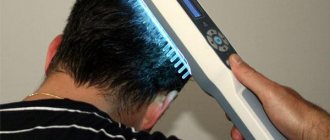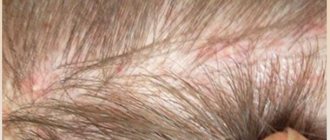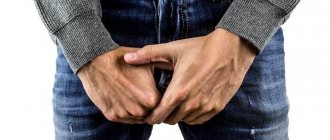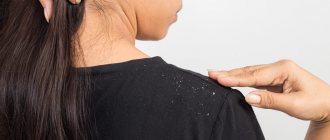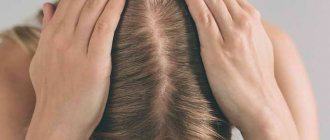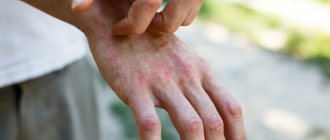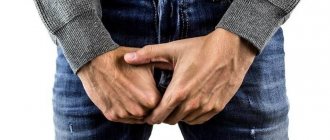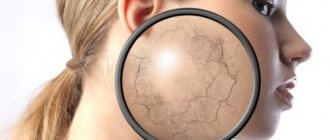Author: Pushkina Natalya Vladimirovna
, dermatovenerologist of the first category, practicing trichologist, member of the Union of Trichologists and the Eurasian Association of Trichologists, teacher at the Nautilus School of Trichology
Seborrheic dermatitis is a serious scalp condition. The scalp peels intensely, a person is constantly bothered by itching, and there is a need to wash the hair frequently to prevent this active peeling. Inflammation may also accompany these manifestations. This problem must be solved comprehensively: properly cleansing the scalp, soothing it, moisturizing it, so that the problem does not reappear.
Causes of itchy scalp and hair loss
Hair thinning can be observed under the influence of various factors, the most common of which are:
- hormonal changes;
- endocrine diseases;
- improper care of strands;
- deficiency of nutrients;
- long-term infectious diseases, especially those accompanied by a prolonged increase in temperature;
- taking certain medications (for example, contraceptives, antihypertensive drugs, steroids).
If this phenomenon is accompanied by itching, various dermatological diseases, fungal or bacterial infections, parasitic infestations, allergies, and autoimmune disorders often occur. The head can also itch due to dandruff: in this case, thinning hair occurs as a result of insufficient access of nutrients to the follicles.
In addition, the clinical picture of hair loss and itching of the scalp can be observed with burns or mechanical injuries. This phenomenon is dangerous due to the risk of scar tissue forming in place of the hair, after which natural restoration of its growth (without surgical intervention) in the affected area will be impossible.
Diagnosis of itchy scalp and hair loss
After examination, the trichologist prescribes diagnostic procedures, which may include:
- scalp scraping;
- general blood analysis;
- determination of hormone levels;
- blood chemistry.
Itching and hair loss in women are often associated with hormonal disorders, so based on the results of the examination, a consultation with an endocrinologist may be recommended.
Treatment
For almost all pathologies that are accompanied by hair loss, conservative treatment is prescribed. Itching is eliminated by Diazolin, Suprastin, Diphenhydramine, but it must be taken into account that these drugs promote drowsiness. The listed medications belong to the antihistamine group, they are prescribed 0.5 or 1 tablet, maximum 2 times a day.
For pediculosis, treatment involves the use of a special shampoo (available over the counter in pharmacies). This is a gentle method of getting rid of parasites, allowing you to eliminate them in 1 treatment. Benzyl benzoate emulsion is used only in isolated cases, in the absence of alternative methods of therapeutic action.
Vitamin deficiency cannot be treated with tablets. The process takes a long period, and during this time hair loss can progress to an even more aggravated stage. To replenish the missing amount of vitamins and minerals, drugs are administered by injection. They use Neurobex, Neurorubin, Ferrum-lek, as well as thiamine, riboflavin, pyridoxine and cyanocobalamin in the form of solutions.
Inflammatory diseases of internal organs are relieved by:
- antibiotics (“Metrogyl”, “Ceftriaxone”, “Ceftazidime”, “Doxycycline”)
- non-steroidal anti-inflammatory drugs (“Voltaren”, “Diclofenac”, “Ibuprofen”)
- vitamin complexes (“Milgama”, “Neurobeksom”, “Neurorubin”)
- hormones (use Dexamethasone, Prednisolone)
- infusion of detoxification solutions (“Reosorbilact”, Ringer’s solution)
- gastroprotectors (use “De-Nol”, “Gastro-norm”)
If an allergy to hair dye or detergents develops, Diphenhydramine and Dexamethasone are injected. Before visiting doctors, it is permissible to take a tablet of Diazolin or Loratidine. Since an allergic reaction develops quickly and can even be life-threatening, you should call an ambulance without delay.
For ringworm, the hair is shaved off. Treatment involves oral administration of Griseofulvin. The daily volume of the active component is calculated at the rate of 15 mg per 1 kg of body weight. For example, with a weight of 60 kg, 900 mg of the active ingredient of the drug is required. The total amount is divided into 3 parts, taken in equal volumes. The duration of therapy is 15-25 days, under the control of bacterioscopic examination of scrapings. When the fungus is no longer detected in the test sample, Griseofulvin is taken once every 2 days, in the same dosage, for another 2 weeks in a row.
For ringworm, local treatment of the lesion with a solution of salicylic acid or iodine is required. If there is a relationship between hair loss and psycho-emotional shock, sedatives are prescribed. This is a group of drugs that have sedative properties.
Use:
- Preparations containing plant substances: “Persen”, “Fitosed”, motherwort extract
- Over-the-counter sedatives of synthetic origin - “Melaxen”, “Barboval”, “Afobazol”
- Prescription options – “Reslip”, “Relium”
For muscle spasms, relaxing medications are prescribed - Mydocalm, Sirdalud, No-Shpu, Papaverine. To normalize the blood supply to the hair follicles, the administration of nicotinic acid according to the scheme is indicated. Initially, an injection of 1 ml of the drug is prescribed, followed by a daily increase by the same volume of solution. Then, when on days 5 and 6 the patient is administered 5 ml of nicotinic acid, from the 7th day of therapy the medicine is reduced by 1 ml. Apply 4 ml, then 3, 2 and 1 respectively.
Boils are eliminated with antibiotics and by using wipes treated with antiseptic ointment. The most effective are “Oflokain”, ichthyol ointment, Vishnevsky liniment. Demodicosis is eliminated by infusion of Metronidazole, manual facial cleansing, and treating the skin with antiseptic solutions. Electrophoresis provides a positive result.
Treatment for hair loss and itching
The course of therapy may include:
- antihistamines;
- means for sebum regulation;
- antifungal, antiparasitic drugs;
- strand growth stimulants (minoxidil, finasteride);
- anti-inflammatory drugs;
- mesotherapy, plasma therapy, laser treatment and some other clinical techniques.
The specialist will prescribe the optimal treatment schedule and also recommend effective ways to prevent recurrence of the problem.
Prevention
To avoid the development of pathologies that lead to baldness, you need to:
- Normalize living conditions, avoid stress.
- Avoid drinking alcohol and do not use medications without a doctor’s prescription.
- Do not apply cosmetics of unknown brands (especially creams).
- Avoid using aggressive hair dye, choose the right concentration of oxidizer, or use the services of a professional.
- Normalize the regularity of sexual activity, avoid long intervals and the development of hormonal instability.
- Do not overuse tampons during your period. It is advisable to alternate their administration with the use of pads.
- Use combs with non-traumatic bristles.
- Introduce fresh vegetables, fruits, and herbs into your diet.
- Avoid using pillows filled with feathers. Such an environment is favorable for the life of mites that cause demodicosis.
- Eliminate from the diet foods containing stabilizers, dyes, thickeners and other artificial components. They negatively affect the liver, inflame and destroy its cells, which is accompanied by hair loss.
- Always use condoms when having sex with a new sexual partner. This will allow you to avoid inflammatory diseases of the urogenital tract, which cause fragility of the hair shafts and rejection of the follicles.
- Always wear a hat when the temperature is low.
- Give up the habit of aimlessly scratching your scalp.
- Avoid being in a draft or getting wet in cold rain.
If you have a hereditary predisposition to various diseases, you should regularly visit a doctor of the appropriate profile and undergo examination.
Note
There are no special signs indicating the cause of the itching. Therefore, in any case when itching occurs, a thorough examination is necessary.
Reference and information material
Author of the article
Khaldin Alexey Anatolievich
Dermatovenerologist, clinical immunologist, MD, professor
Loading...
Take other surveys
Treatment of seborrheic dermatitis in adults and children
Seborrheic dermatitis may resolve without treatment. But it often occurs in waves, with remissions and exacerbations.
Several repeated courses of therapy or ongoing maintenance therapy may be required until the symptoms go away completely. After some time, exacerbation may occur again.
You should consult a doctor if repeating the usual regimens of care and relieving acute symptoms does not help, as well as if there are signs of a secondary infection.
The basis of therapy is the use of medicinal shampoos, creams and lotions.
For children, it is recommended to use special children's shampoos; before washing, you can apply oil or cream to help soften the crusts.
In children, it is important to stop itching, since scratching can cause secondary infection of the scabs.
Features of the treatment method
When selecting external skin care products, choose products containing the following ingredients that reduce skin inflammation:
- Keratolytics: salicylic, lactic acid, urea, propylene glycol.
- Topical antifungal agents: shampoos and creams containing ketoconazole (ciclopirox).
- Products with selenium disulfide or zinc pyrithione.
- Local low-strength corticosteroids can only be used as prescribed by a doctor to relieve the acute phase of the disease, except for the facial skin.
- In case of resistant forms, patients may be offered oral antifungal drugs.
- In severe cases, isotretinoin or phototherapy may be considered.
How is seborrheic dermatitis treated at the Rassvet clinic?
We evaluate the patient's skin type, severity and location of the rash.
The diagnosis of seborrheic dermatitis is based on the clinical picture. The detection of Malacesia has no diagnostic value, since this is a normal microflora of human skin.
A dermatologist evaluates the condition and makes a differential diagnosis with psoriasis, rosacea (on the face), pityriasis versicolor (on the body), and atopic eczema in children. At first, we usually recommend shampoo and only if the selection of permanent skin care products fails, do we move on to active drug therapy.
Causes of the disease
The reasons for the development of the disease are not completely clear. Seborrheic dermatitis is not a disease of the sebaceous glands, although it develops in areas saturated with them.
A significant role in the development of the disease is played by yeast-like fungi of the genus Malassezia (they exist on the skin of most healthy people, but in some they can cause rashes and skin irritation), the composition of lipids on the surface of the skin, as well as the characteristics of the immune response to Malazessia fungi and their metabolic products.
In adults, severe disease is associated with the following conditions:
- oily skin (seborrhea);
- lack of sleep and stress;
- history of seborrheic dermatitis and psoriasis in relatives;
- states of immunosuppression (organ transplantation, HIV, lymphoma);
- neurological or psychiatric disease.
The main cause of seborrheic dermatitis in children is increased activity of the sebaceous glands (rapid growth and secretion of sebum), which occurs due to the circulation of maternal hormones in the child’s blood in the first weeks of life. Malacesia is not a leading factor in children, unlike in adults.
Why does your head itch if there are no lice - the most common causes
The appearance of unbearable, painful itching forces people to wonder why their heads itch - there are no lice, and their hair has been painstakingly washed not long ago. The causes of skin irritation can be both external and internal triggers. It is often impossible to identify them without the help of others, so you should resort to the help of doctors of a narrow specialization - a trichologist, dermatologist, gastroenterologist, endocrinologist.
They will conduct a series of laboratory tests and prescribe pharmacological drugs to eliminate the main cause of the diagnosed pathology, as well as to quickly relieve symptoms.
Symptoms
The situation with an aesthetic scourge that affects the neck and back of the head, hidden under the hairline, is dangerous because it is initially not intrusive and does not prompt a person to urgently run to the doctor. But the lack of adequate therapy in this case can lead to a rapid worsening of the problem.
Most often, this scourge affects women and children. This factor is connected with the fact that in the everyday life of the fairer sex there are a large number of allergens (shampoos, conditioners, masks and hair dyes), and children's bodies are more susceptible to irritating external factors. The development of an aesthetic problem in them can be determined by the appearance of characteristic rashes and redness, as well as the following negative signs:
- the skin begins to peel off intensively, and particles of crumbled epidermis cover the clothes;
- a rough coating appears on the skin, and crusts and blisters may also form;
- There is a constant sensation of itching, which cannot be relieved by any scratching of the skin.
In some cases, this negative phenomenon may be accompanied by a rise in temperature, increased lacrimation and swelling. Over time, the itching will spread wider and wider, covering neighboring areas.
